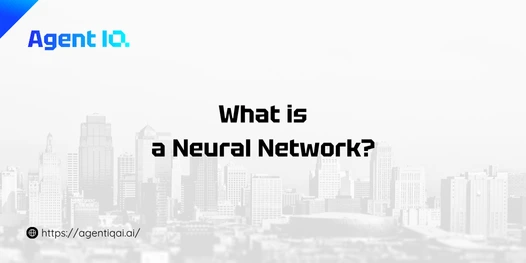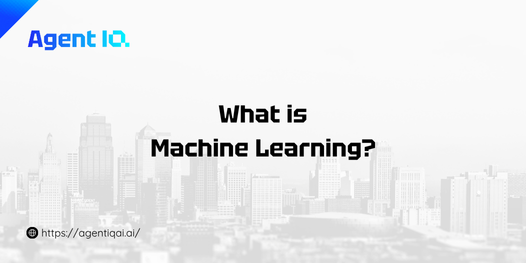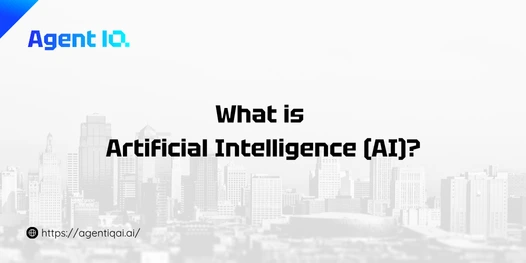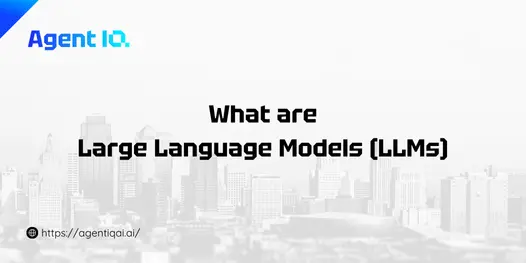What is NLP (Natural Language Processing)?
- Publised November, 2025
This article will delve into an in-depth definition of NLP, how it works, its historical development, applications, challenges and its promising future.
Table of Contents
Toggle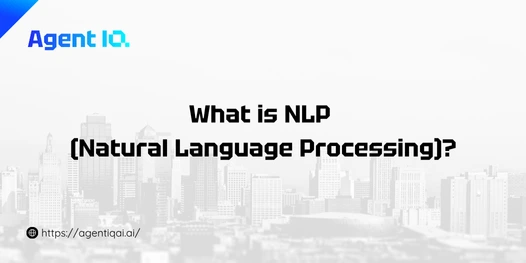
Key Takeaways
- NLP is a subfield of computer science and artificial intelligence (AI) focused on enabling computers to understand and process human language.
- NLP utilizes various techniques like tokenization, parsing, and sentiment analysis.
- NLP applications include voice assistants, machine translation, and sentiment analysis.
What is Natural Language Processing (NLP)? (In-depth definition)
Natural Language Processing tackles the complexities of “natural language” – the everyday language humans use – in contrast to structured programming languages that computers readily understand. NLP focuses on enabling machines to process and understand human communication, whether spoken or written. This fascinating field sits at the intersection of several disciplines:
- Artificial Intelligence (AI)
- Computer Science
- Computational Linguistics (rule-based modeling of human language)
- Machine Learning (ML)
- Deep Learning (DL)
- General Linguistics
NLP strives for computers to not just recognize words but to truly understand context, meaning, sentiment, and intent. Its core objectives revolve around four main pillars:
- Understanding: Interpreting the meaning of human language.
- Interpreting: Analyzing the nuances and context.
- Manipulating: Processing and transforming language data.
- Generating: Creating human-like text or speech.
The challenge lies in overcoming the inherent complexity of human language, marked by ambiguity and context-dependent meanings. NLP endeavors to teach machines to decipher and respond appropriately to these intricacies.
How Does NLP Work? (Components and Processes)
NLP operates through a series of steps to break down, analyze, and interpret human language. This process typically involves these key linguistic levels of analysis:
- Phonetics/Phonology: Deals with the sounds of language (primarily relevant in speech recognition).
- Morphology: Study of word structure, including root words, prefixes, and suffixes.
- Lexical Analysis: Breaking text into individual words or lexemes.
- Syntax: Analyzing the grammatical structure of sentences, including word order and relationships.
- Semantics: Focuses on the meaning of words and how they combine to form sentence meaning.
- Pragmatics: Understanding language in real-world context, including implications and intent beyond the literal meaning.
These levels are processed using various techniques, including:
- Text Pre-processing (Normalization): Preparing text for analysis.
- Tokenization: Dividing text into smaller units (words, phrases, symbols). For example, “The quick brown fox” becomes “The,” “quick,” “brown,” “fox.”
- Lowercasing: Converting all text to lowercase to ensure uniformity.
- Stop Word Removal: Eliminating common words like “the,” “is,” and “a” that don’t contribute significantly to meaning.
- Stemming & Lemmatization: Reducing words to their base form. Stemming uses a heuristic approach (e.g., cutting off suffixes), while lemmatization uses dictionaries and context to find the true lemma (dictionary form).
- Syntactic Techniques: Analyzing sentence structure.
- Part-of-Speech (POS) Tagging: Assigning grammatical categories (noun, verb, adjective, etc.) to each word.
- Parsing / Dependency Parsing: Analyzing the grammatical structure to reveal relationships between words.
- Semantic Techniques: Understanding meaning.
- Named Entity Recognition (NER): Identifying and classifying entities like people, organizations, and locations.
- Word Sense Disambiguation: Determining the correct meaning of a word with multiple interpretations based on context.
- Word Embeddings (e.g., Word2Vec, GloVe): Representing words as numerical vectors in a “semantic space,” where similar words have similar vectors, capturing semantic relationships.
- Natural Language Understanding (NLU): A subset of NLP focused on interpreting meaning, intent, sentiment, and context.
- Natural Language Generation (NLG): The process of converting structured data into human-readable text or speech.
Historical Development of NLP
NLP’s evolution has been shaped by advancements in linguistics, computer science, and AI.
Early Foundations (1940s-1960s)
- 1950: Alan Turing’s “Computing Machinery and Intelligence” introduces the Turing Test.
- 1954: Georgetown-IBM experiment demonstrates early machine translation capabilities.
- 1957: Noam Chomsky‘s work on generative grammar influences linguistic theory.
- 1966: ELIZA chatbot uses rule-based pattern matching to simulate conversation.
- 1970: SHRDLU program understands commands within a limited context.
Symbolic vs. Statistical Approaches (1980s-1990s)
- A shift occurs from rule-based (Symbolic NLP) to data-driven statistical methods.
- Hidden Markov Models (HMMs) emerge for speech recognition.
- Increased computational power enables the use of large text datasets.
Machine Learning and Deep Learning Era (2000s-Present)
- Early 2000s: Neural language models begin to gain traction (Yoshio Bengio).
- 2006: Google Translate marks an early success in statistical machine translation.
- 2011: Apple’s Siri popularizes voice assistants.
- 2010s: Deep learning (RNNs, CNNs, LSTMs) and representation learning revolutionize the field.
- 2017: The “Attention is All You Need” paper introduces the Transformer architecture.
- Late 2010s-Present: Large Language Models (LLMs) significantly improving performance across many NLP tasks.
This historical journey demonstrates a progression from manually defined rules to statistical models and, ultimately, to powerful neural networks.
Key Applications of NLP
NLP’s impact is felt across various industries and aspects of daily life:
- Voice Assistants and Chatbots: Powers virtual assistants (Siri, Alexa, Google Assistant) and customer service chatbots.
- Machine Translation: Automates the translation of text and speech between languages (e.g., Google Translate).
- Sentiment Analysis: Interprets the emotional tone (positive, negative, neutral) in text (customer reviews, social media).
- Text Summarization: Automatically generates concise summaries of longer documents or articles.
- Information Extraction (e.g., NER): Automatically pulls specific, structured data (names, dates, entities) from unstructured text (legal documents, medical records).
- Email Filtering & Spam Detection: Categorizes emails, identifying and blocking unwanted messages.
- Content Generation: AI models create human-like text for articles, marketing copy, reports, and product descriptions.
- Search Engines: Enhances search relevance by understanding user intent and natural language queries.
- Grammar and Spell Checkers: Tools like Grammarly and built-in word processor features.
- Document AI: Platforms using NLP to process and extract data from various document types (invoices, contracts).
Challenges in Natural Language Processing
Despite its progress, NLP faces inherent complexities due to the nature of human language:
- Ambiguity: Human language is inherently ambiguous (lexical, syntactic, semantic, pragmatic). For instance, the word “bank” can refer to a financial institution or the side of a river (lexical ambiguity). The sentence “Flying planes can be dangerous” can mean the act of flying planes is dangerous, or planes that are flying are dangerous (syntactic ambiguity).
- Contextual Understanding: Difficulty in grasping broader context, subtle nuances, idiomatic expressions, sarcasm, irony, and cultural references.
- Data Quality and Quantity: NLP models require vast amounts of high-quality, annotated training data, which is expensive and time-consuming to create.
- Bias in Data: Models can learn and perpetuate biases present in their training data (e.g., gender, racial, cultural biases).
- Out-of-Vocabulary (OOV) Words: Handling new words, slang, or proper nouns not encountered during training.
- Language Variability: Dealing with dialects, slang, informal language, misspellings, and grammatical errors.
- Scalability and Performance: Building NLP systems that can handle immense datasets and complex computations in real-time.
The Future of NLP
NLP is a dynamic field marked by continuous innovation. Key trends shaping its future include:
- Advanced Deep Learning & LLMs: Continued development of more sophisticated neural architectures leading to even more powerful and versatile Large Language Models.
- Transfer Learning: Models pre-trained on vast datasets adapting to new, specific tasks with less data, making NLP more accessible.
- Multimodal NLP: Integrating language processing with other data types (vision, audio) for more comprehensive understanding.
- Real-time & Personalized Interactions: Faster processing and more context-aware systems for highly personalized user experiences.
- Ethical AI & Bias Mitigation: Increased focus on addressing and reducing biases, ensuring fairness, transparency, and privacy in NLP applications.
- Domain-Specific Adaptations: Tailored NLP solutions for specialized fields like healthcare, legal, and finance.
These trends suggest that NLP will continue to revolutionize human-computer interaction, making technology more intuitive and intelligent.
FAQs
What is the purpose of NLP natural language processing?
The primary goal of NLP is to bridge the communication gap between humans and machines, making human language comprehensible to computers.
What is the difference between NLP and NLU?
NLP (Natural Language Processing) is the broader field encompassing all aspects of processing human language, while NLU (Natural Language Understanding) is a subfield specifically focused on interpreting the meaning and intent behind the language.
What are the ethical considerations in NLP?
Ethical considerations in NLP include addressing biases in training data, ensuring fairness and transparency in algorithms, protecting user privacy, and preventing the misuse of NLP technology for malicious purposes.
Your Knowledge, Your Agents, Your Control


